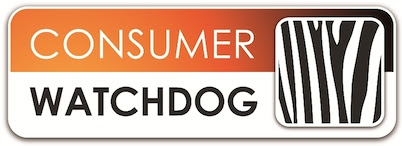I react particularly badly when the person bossing me around is someone whose salary I’m paying. When it’s me paying the bills by spending my money in your store or with your organization I really dislike being told how I should or shouldn’t behave.
Company complaints procedures are a very good example of this.
Some while ago a reader contacted us to tell us about the complaints procedure he’d seen at a hospital he’d recently visited. It had ten, yes TEN, steps. If you had a complaint about the service you received you were first required to contact the Supervisor in charge, then the PR officer, then the Matron, then the Hospital Manager, then the Hospital Superintendent, then the Ministry of Health toll-free number, then the relevant Director in the Ministry, then the Permanent Secretary, then the Minister of Health and finally the Office of the President.
Given that everyone in this sequence is probably really busy and that some of them will be on leave, on training or attending typically endless Government meetings I can imagine that going all the way to the top of this sequence could easily take months. By the time your complaint gets to HE’s desk a year could have gone by.
That isn’t a complaints procedure. It’s a complaints avoidance procedure.
It isn’t just parts of the Public Service that makes complaining difficult. I’ve seen complaints procedures (almost) as complicated in parastatals, banks and retailers. They seem to think that their way of dealing with customer complaints should be as complicated as their organizational structure.
And some organizations can become VERY complicated. Thomas Cook, a UK-based travel agency appointed a new CEO a few years ago, Harriet Green. She reported on a BBC program that when she arrived the organization she discovered that it had 11 levels of management between her as CEO and the people that mattered most, her customers. She saw her primary task was to simplify that and that’s one of the reasons that when she left two years later, saying her work there was complete, their share price had increased tenfold.
However, regardless of the complexity of an organization the way they manage complaints should be simple.
That’s why we always recommend The Official Consumer Watchdog Three Step Complaints Procedure. Feel free to use this whenever you feel the need to complain.
Step 1. Complain to the person who offended you. It doesn’t matter if it was the person on the till who short-changed you, the waiter who brought cold food or the bank teller who disappeared when you reached the front of the queue. That person is the person to whom you should first complain. If they refuse to accept your complaint or don’t show suitable humility and contrition then you escalate to Step 2.
Step 2. Complain to the most senior person in the building. That person’s title will be something like “Branch Manager”, “Hospital Manager” or “Restaurant Manager”. Don’t bother with supervisors, administrators or team leaders. Only the most senior person will do. Then, if they fail to satisfy you, go to Step 3.
Step 3. Complain to the most senior person in the entire organization. Their job title will be either “Managing Director” or “Chief Executive Officer”. In special cases you might accept people with titles like “Country Manager” or “Regional Manager” but it absolutely must be someone who has the capacity to frighten the person who originally offended you.
Unfortunately, some people and some organizations simply don’t get it. They think that they are the ones who can dictate how their customers should behave. We saw this recently in our Facebook group. One member of the group posted a question asking for advice on which company to select in a particular industry but quickly the conversation focused on one specific company and they got a hard time from many people. That’s when an employee of that company, who it turns out is a fairly senior manager, said:
“we encourage our valued customers to continue reporting all issues as with all other faults through the existing channels and processes to be able to assist (not social media)”.Did you see that last bit? We are only allowed to complain the way they dictate but “not social media”? Is he serious? We’re not allowed to complain on Facebook?
Are we suddenly living in North Korea? Are we not the ones who pay this guy’s salary? When did we become his employees, his debtors or his children. Those are all people he can boss around, not us. We are entitled to comment and complain wherever, whenever and however we feel and it is NOT his job to tell us otherwise.
As someone else in the group later said:
“I will air my grievances any how I like. I have gone through all the formal escalation procedures and have beared no fruit. If you were so concerned about customer service and retaining customers you would have made that info available for all to see when the problem started instead of waiting for us to complain first; that's how serious organizations do business.”I’m certainly not saying that consumers are entitled to be rude to suppliers, that’s not how we operate in Botswana, we’re a polite nation but I think it’s enormously rude and patronizing of a supplier to start dictating to their customers how they should conduct themselves, particularly when they have a complaint.
Instead I suggest this. When you have a complaint you should remain calm, assert yourself and stick to our three step procedure. I promise you that you’ll stand a very good chance of getting exactly the result you deserve.

No comments:
Post a Comment